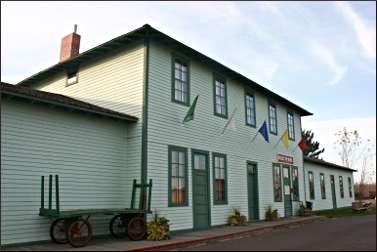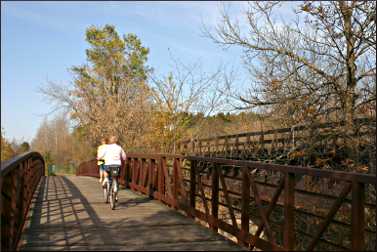Hinckley's Fire Museum
Tales of an 1894 inferno that wiped out Minnesota towns still shock those who hear them.

© Beth Gauper
On a September day in 1894, Hinckley, Minn., was hell on earth.
As a logging and rail center midway between St. Paul and Duluth, the town had grown quickly. But during the summer of 1894, less than 2 inches of rain fell.
Small fires smoldered in the countryside, many started when hot cinders from trains landed in tinder-dry slashings — the crowns, stumps and branches left behind by logging crews.
On Sept. 1, breezes fanned small fires near Mission Creek and Pokegama, villages south of Hinckley. They joined, and the flames, breaking through a thick layer of warm air, were turned into a fiery cyclone by cool air traveling down from above.
It quickly moved north toward Hinckley, where it became a 4½-mile-high wall of fire. The air in its path became so hot that buildings seemed to melt, not burn.
Fireballs appeared out of nowhere, flying through the air.
By 6 p.m. that day, six towns, including Hinckley and Sandstone, had been destroyed. At least 418 people were dead.
"TWO MINNESOTA TOWNS UTTERLY DESTROYED BY FIRE," read the front page of the next day's New York Times. "GREAT FOREST FIRES IN AMERICA" read the first of five days' worth of front-page coverage in the London Times.
Today, the tales of heroism and tragedy told at the Hinckley Fire Museum are just as gripping as they were more than 125 years ago.
"My grandfather used to tell me about the Hinckley Fire when I was a young girl growing up in Minneapolis," says Jeanne Coffey, the director of the museum for many years. "It was an intriguing thing to him."
Among the heroes were St. Paul & Duluth engineer Jim Root; his fireman, John McGowan; and porter John Blair, who arrived on a train from the north just as the fire reached Hinckley from the south.
With an extra load of panicked townspeople, they backed the flaming train to Skunk Lake, where nearly 300 people huddled in 18 inches of mud and slime as the fire passed over them.

© Beth Gauper
Today, bicyclists pass Skunk Lake on the old rail bed, now part of the Willard Munger State Trail.
The fire sites begin just east of Hinckley along Fire Monument Road. On the north side of the road is Memorial Cemetery, where a 51-foot granite monument rises above four long trenches that contain the remains of 248 victims.
Back toward town, the road ends in the juncture of two rail lines. Along one is Memorial Park, site of a gravel pit in which 100 people huddled in water and were saved.
Three blocks north along the other line is the St. Paul and Duluth Depot, rebuilt soon after the original burned. Now it's the museum, where the story is graphically told.
A 19-minute movie in the old freight room, smelling of aged planks, explains how careless logging practices and extraordinarily hot, dry weather led to the destruction of "The Town Built From Wood," which had 1,200 to 1,500 residents before the fire. The narrative is broken by accounts from survivors.
In the old telegrapher's room, a plaster likeness of 25-year-old Thomas Dunn sits awaiting Root's train from Duluth, on which members of Dunn's family were traveling. A tape records his last message: "I think I've stayed too long."

© Beth Gauper
Pathos is unavoidable. Among the grisliest of the museum's exhibits is the coroner's death list, which lists the dead by number.
Nos. 314-415 are "unknown," including No. 326: "Male, found in lumber yard. Only jack knife, watch and buttons left. Not enough found to be buried."
Heroism and venality, miracles and wretched bad luck. It's all part of the Hinckley story.
Trip Tips: Hinckley Fire Museum
Getting there: It's 1¼ hours north of the Twin Cities. The museum is downtown, west of I-35.
Hours: It's open Thursdays-Sundays from mid-May to mid-October.
Admission: Admission is $5 adults, $2 students, free for children 6 and under.
Fires of 1918: Another fire to the north killed even more people 24 years later. The Fires of 1918 Museum in Moose Lake tells about the worst single-day natural disaster in Minnesota history.
A 32-mile stretch of the Munger State Trail makes visiting both museums an interesting bicycle trip. For more, see The Fire Ride.
Accommodations: Grand Casino Hinckley, east of I-35, has many rooms and several restaurants.